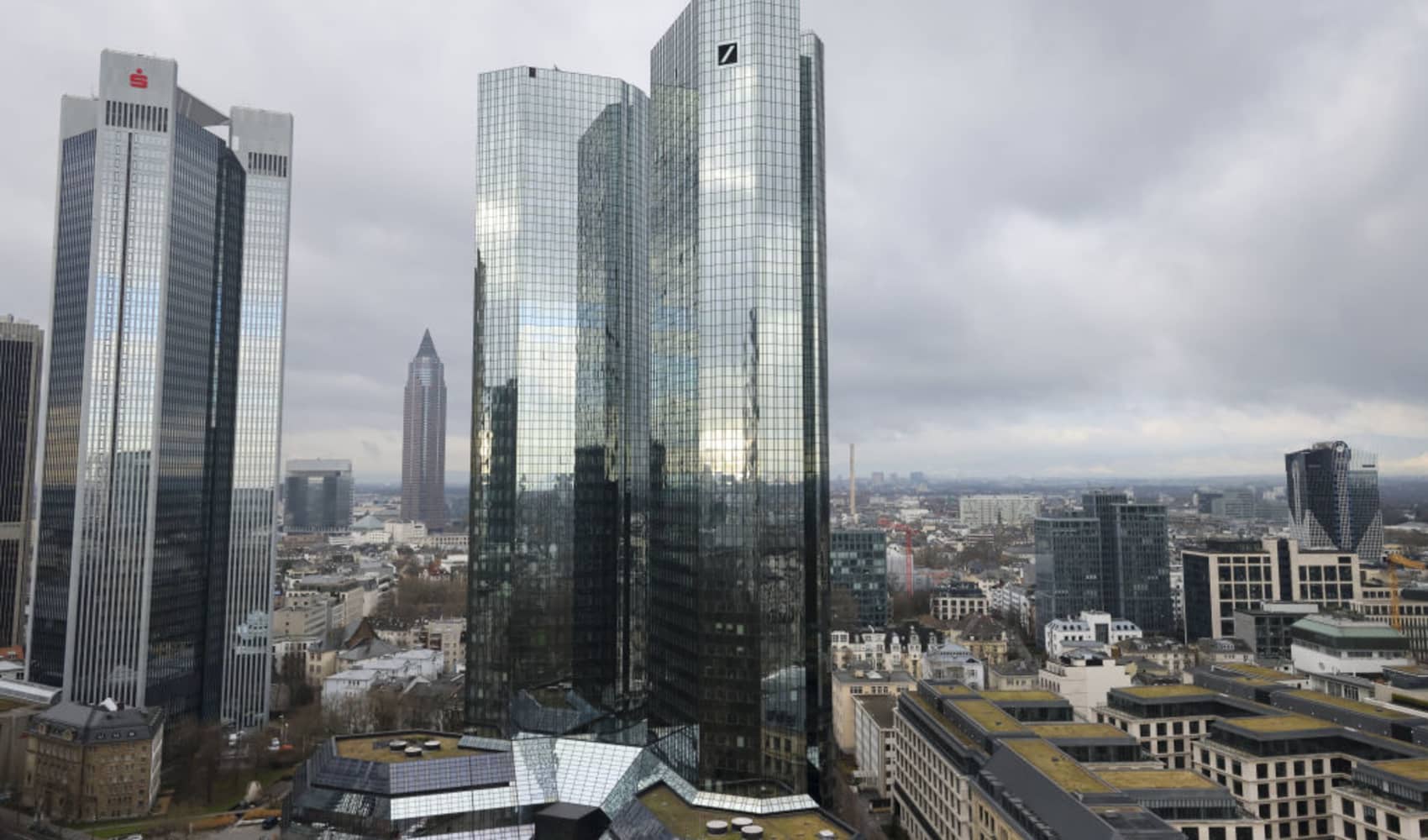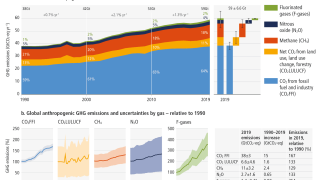
- The latest Intergovernmental Panel on Climate Change report, which was published Monday, included a number of charts, all of which help tell the story of climate change.
- Anthropogenic emissions are still increasing, but the growth rate of emissions was slower between 2010 and 2019 than between 2000 and 2009.
- The price of renewable energy and batteries for passenger electric vehicles has fallen significantly, and their adoption continues to rise. However, globally current climate policy responses are not sufficient to reduce greenhouse gas emissions enough to limit global warming to around 1.5° Celsius.
Climate change has not been caused by one bad actor, and it won't be solved by one silver bullet. Instead, climate change is being caused by a web of problems and is being addressed by another web of mitigation and adaptation strategies.
Globally, there has been significant progress to limit greenhouse gas emissions and slow global warming, but it hasn't been enough.
It's a complicated story and the charts, included as part of the latest Intergovernmental Panel on Climate Change report which was published Monday, tell the story visually, which can be helpful.
Get Boston local news, weather forecasts, lifestyle and entertainment stories to your inbox. Sign up for NBC Boston’s newsletters.
While the mix of factors and solutions are all incremental, the consequences of inaction are both dire and clear.
"We are on a fast track to climate disaster: Major cities under water. Unprecedented heatwaves. Terrifying storms. Widespread water shortages. The extinction of a million species of plants and animals. This is not fiction or exaggeration. It is what science tells us will result from our current energy policies," United Nations Secretary General António Guterres said on Monday in response to the report.
Greenhouse gas emissions caused by humans have increased
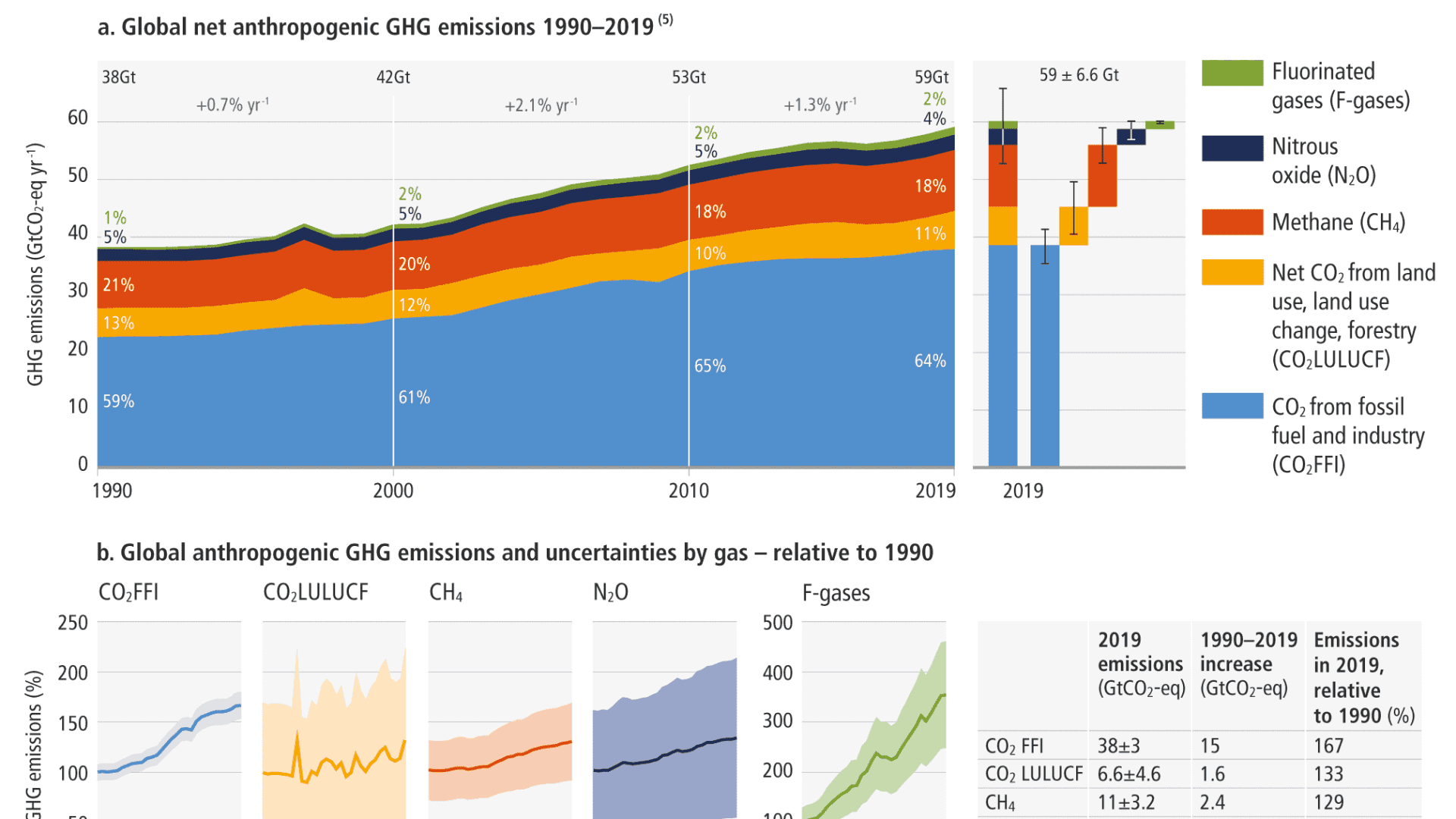
The reason climate change is a problem is because global anthropogenic ¢meaning originating from human behavior — greenhouse gas emissions have been increasing. Taken as a whole, emissions reductions from efficiencies have been less than emissions increases that come from rising global activity.
Money Report
In order to limit global warming to around 1.5° Celsius (2.7° Fahrenheit) above preindustrial levels, which is the generally accepted goal established by the 2015 Paris Climate Agreement, greenhouse gas emissions need to reach their highest peak before 2025, according to scenarios the IPCC analyzed. By 2030, greenhouse gas emissions must be reduced by 43%, according to the report, which was authored by 278 scientists and experts.
That's not where the world is currently headed. "Current climate pledges would mean a 14% increase in emissions," Guterres said on Monday. "And most major emitters are not taking the steps needed to fulfill even these inadequate promises."
It is also true, however, that the rate of growth of greenhouse gas emissions between 2010 and 2019 was lower than that between 2000 and 2009.
Emissions by geography
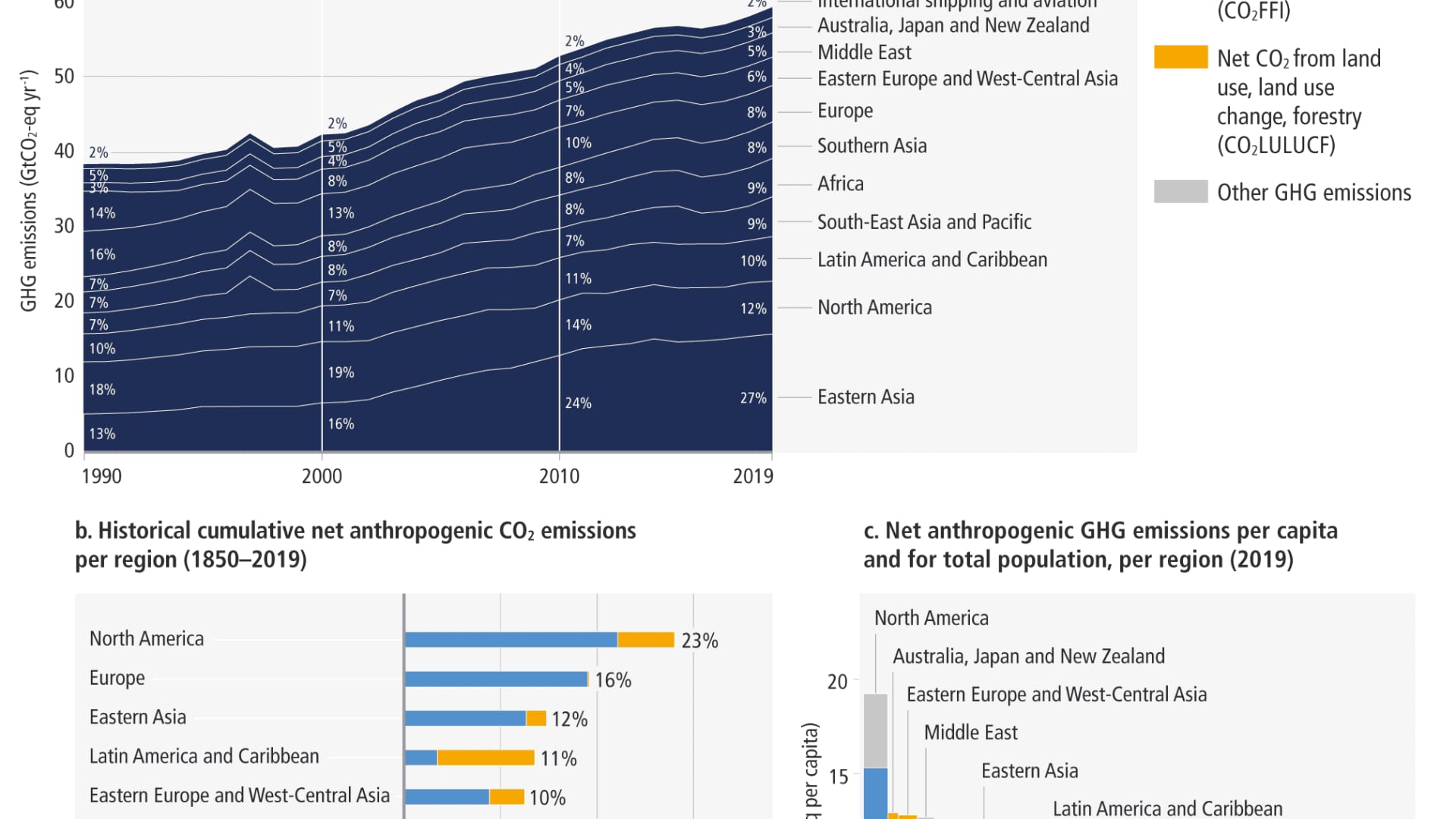
Greenhouse gas emissions have overwhelmingly come from more developed countries and wealthier individuals.
"Climate change is the result of more than a century of unsustainable energy and land use, lifestyles and patterns of consumption and production," said IPCC Working Group III Co-Chair Jim Skea in a written statement published alongside the report. "This report shows how taking action now can move us towards a fairer, more sustainable world."
The cost of renewable energy has plunged
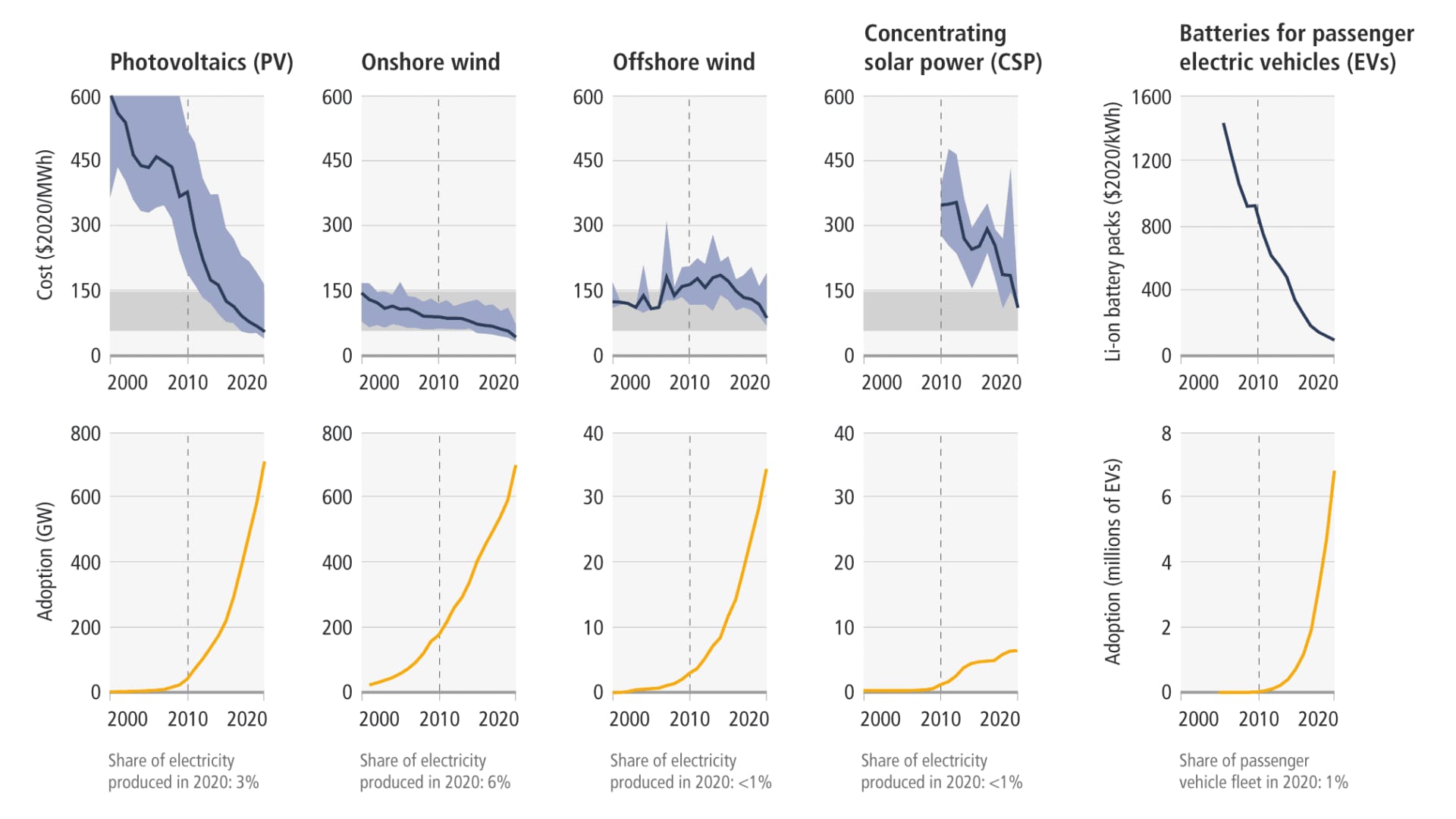
The development and scaling up of renewable energy technologies, such as wind and solar, has resulted in the price falling precipitously in the last decades. Adoption of those technologies has continued to increase.
Even still, the speed of the shift to renewable energy must triple, Guterres said on Monday in response to the report. "In most cases, renewables are already far cheaper," he said.
The war in Ukraine has pressured countries around the world to limit their dependence on Russian energy very quickly. As a result, leaders, including those U.S. Secretary of Energy Jennifer Granholm, have called for an increase in domestic oil and gas production to meet wartime demands and to ease high gas prices.
The U.N. secretary general rebuked even a short-term increase in oil and gas production, however.
"Inflation is rising, and the war in Ukraine is causing food and energy prices to skyrocket. But increasing fossil fuel production will only make matters worse," Guterres said on Monday. "Choices made by countries now will make or break the commitment to 1.5 degrees."
Current climate action is insufficient
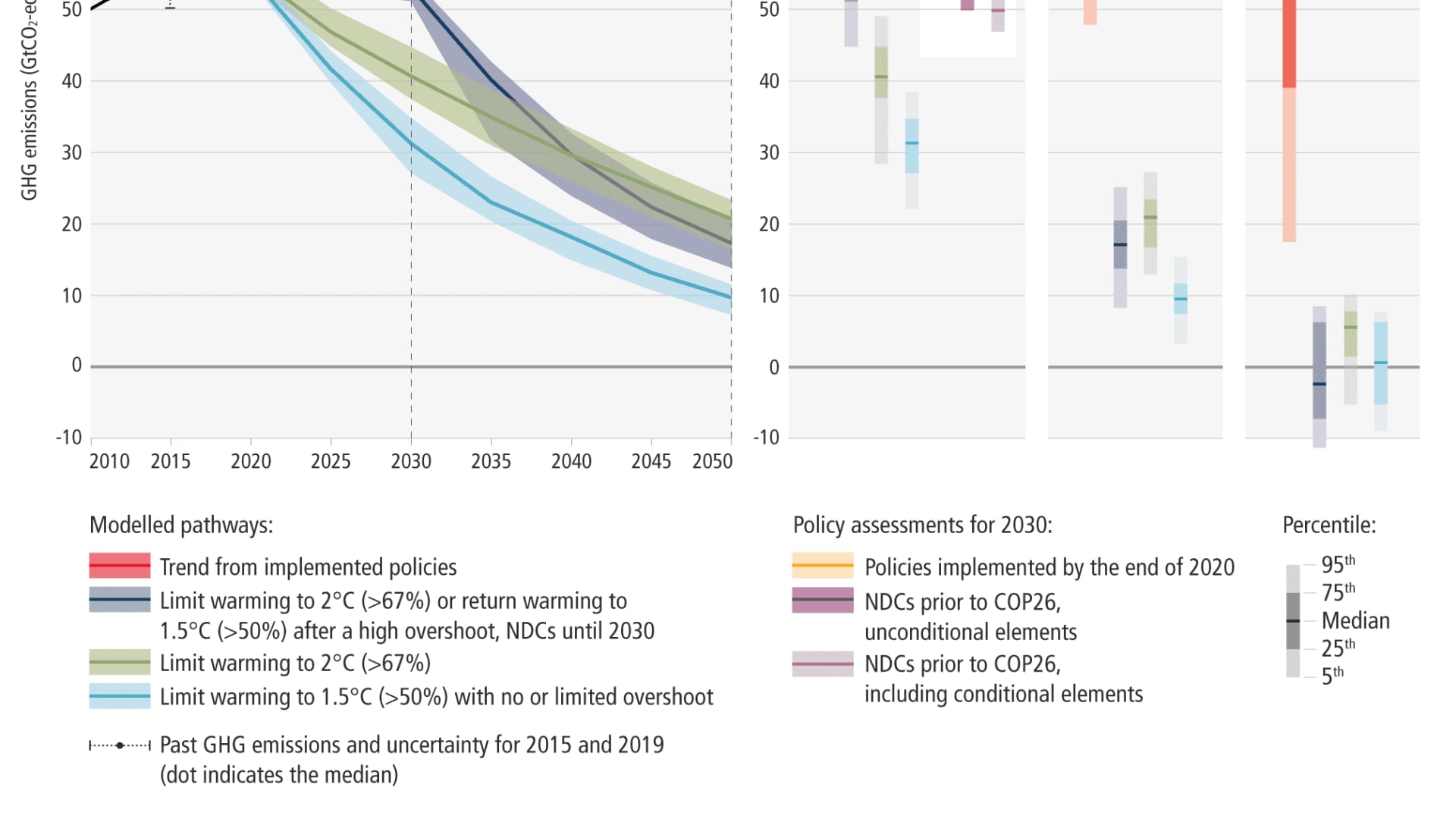
The current global response to climate change is insufficient.
Even if the nationally determined contributions announced before last year's COP26 climate conference are implemented, then greenhouse gas emissions will not fall enough to limit global warming.
The current trend of implemented policies is in red in the chart above. The light blue and green lines show greenhouse gas emissions that would be necessary to limit global warming to 1.5° Celsius and 2° Celsius, respectively. Both of those trend lines fall beneath the red trend line, where the globe currently is headed.
More aggressive reductions will limit warming
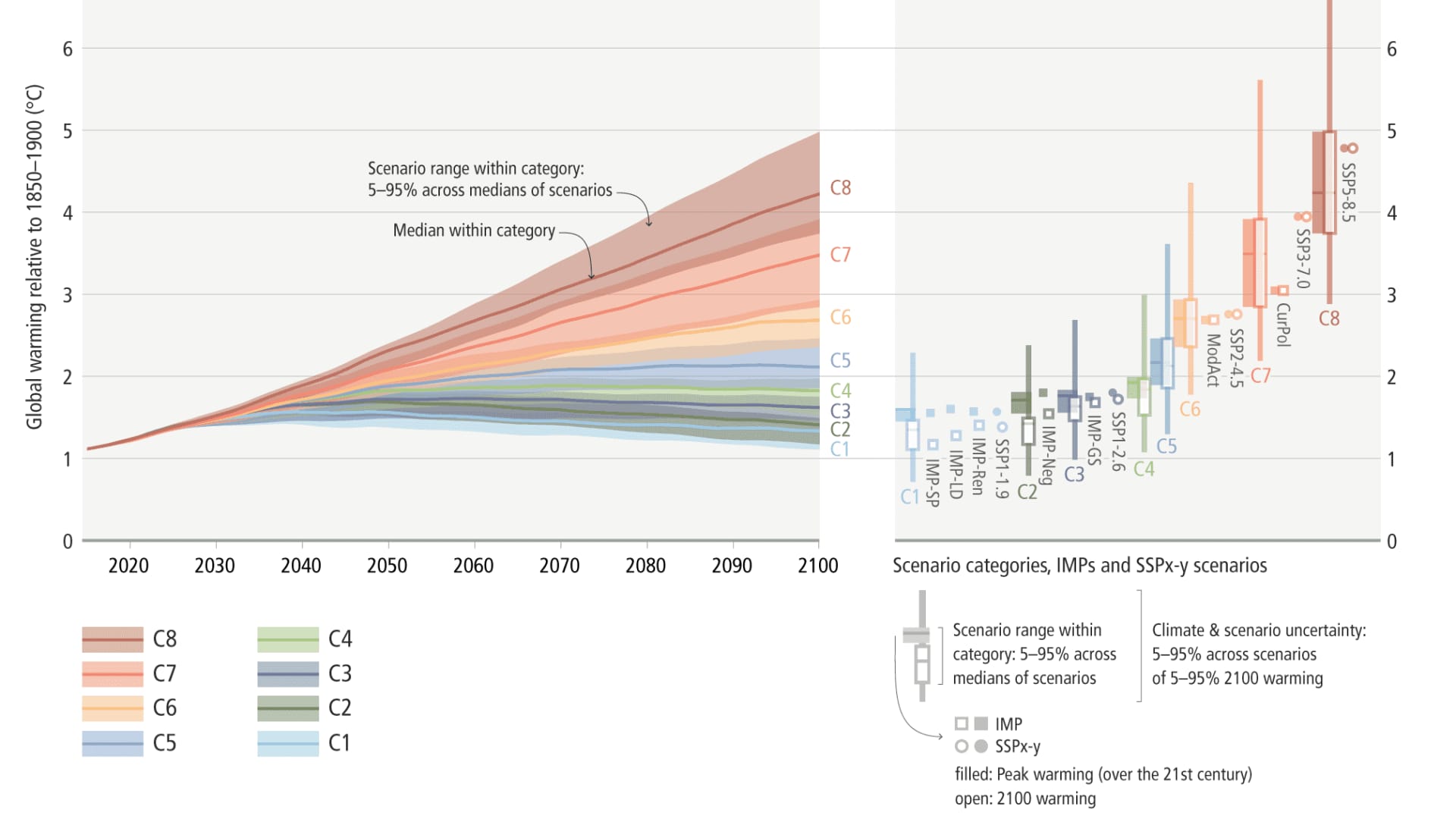
The global warming that occurs globally (shown on the right) depends on how aggressively emissions are decreased.
A more aggressive policy (C1, the lighter blue color) will result in less warming. A less aggressive emissions reduction policy (C8, the dark red color) will result in the most global warming.
Pathways that limit global warming to 1.5 or 2 degrees Celsius require immediate action
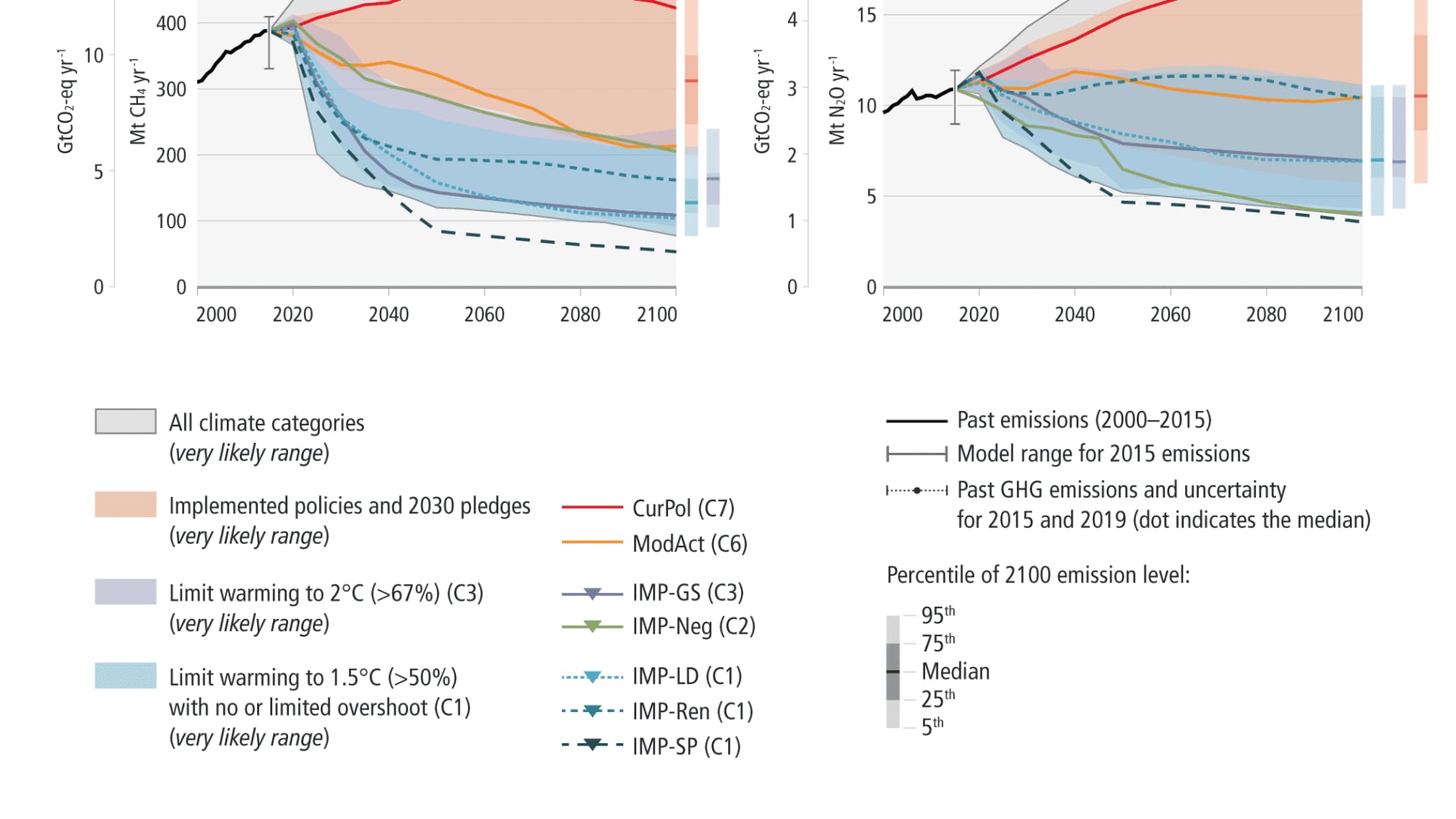
The chart above shows greenhouse gas (GHG), carbon dioxide (CO2) methane (CH4) and nitrous oxide (N2O) emissions under various potential scenarios, what the IPCC calls illustrative mitigation emissions pathways (IMPs).
The red-shaded ranges show the projected emissions pathways if current policies and pledges are carried forward. The blue shaded range show emissions pathways if more aggressive policies that limit global warming to 1.5°C are implemented.
"It's now or never, if we want to limit global warming to 1.5°C (2.7°F)," said Skea in a written statement. "Without immediate and deep emissions reductions across all sectors, it will be impossible."
Where emissions come from
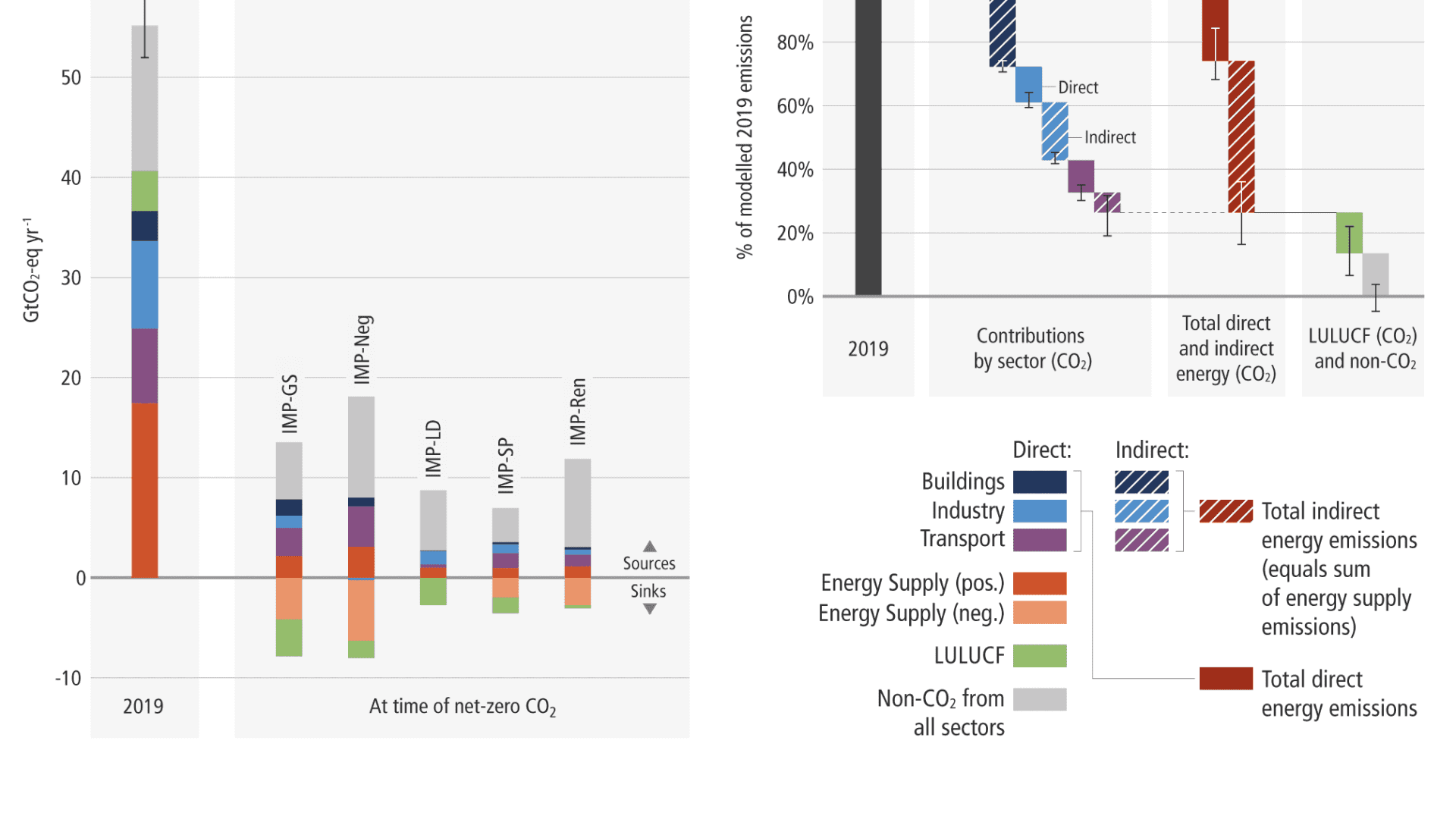
The chart above shows where carbon dioxide emissions come from by sector and any number of possible pathways to get to net zero.
A cost-benefit analysis of mitigation options
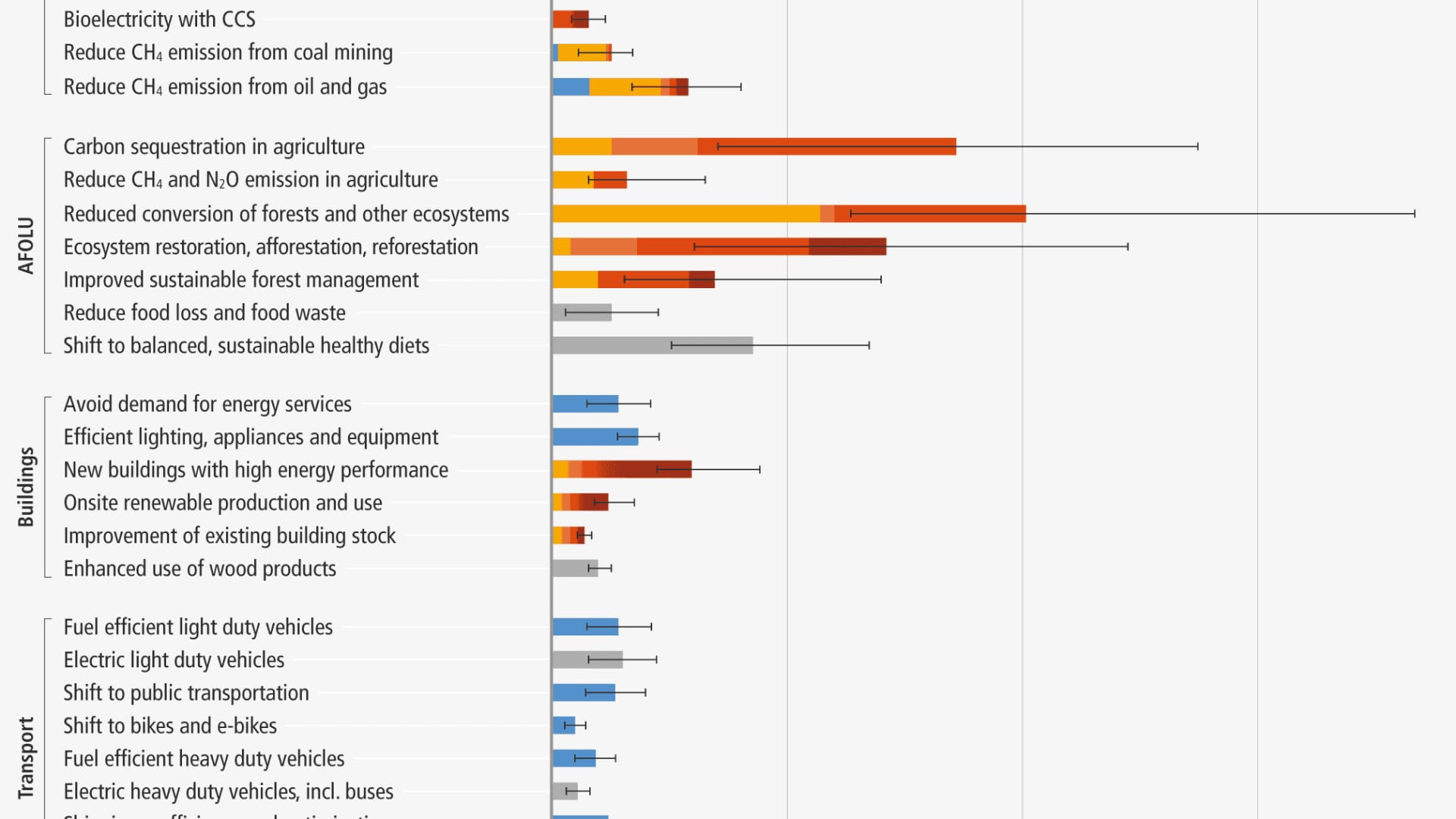
Not all climate change solutions will have the same impact on emissions. The chart above shows the potential net greenhouse gas emissions avoided for each technology.
Consumer behavior changes can lower demand
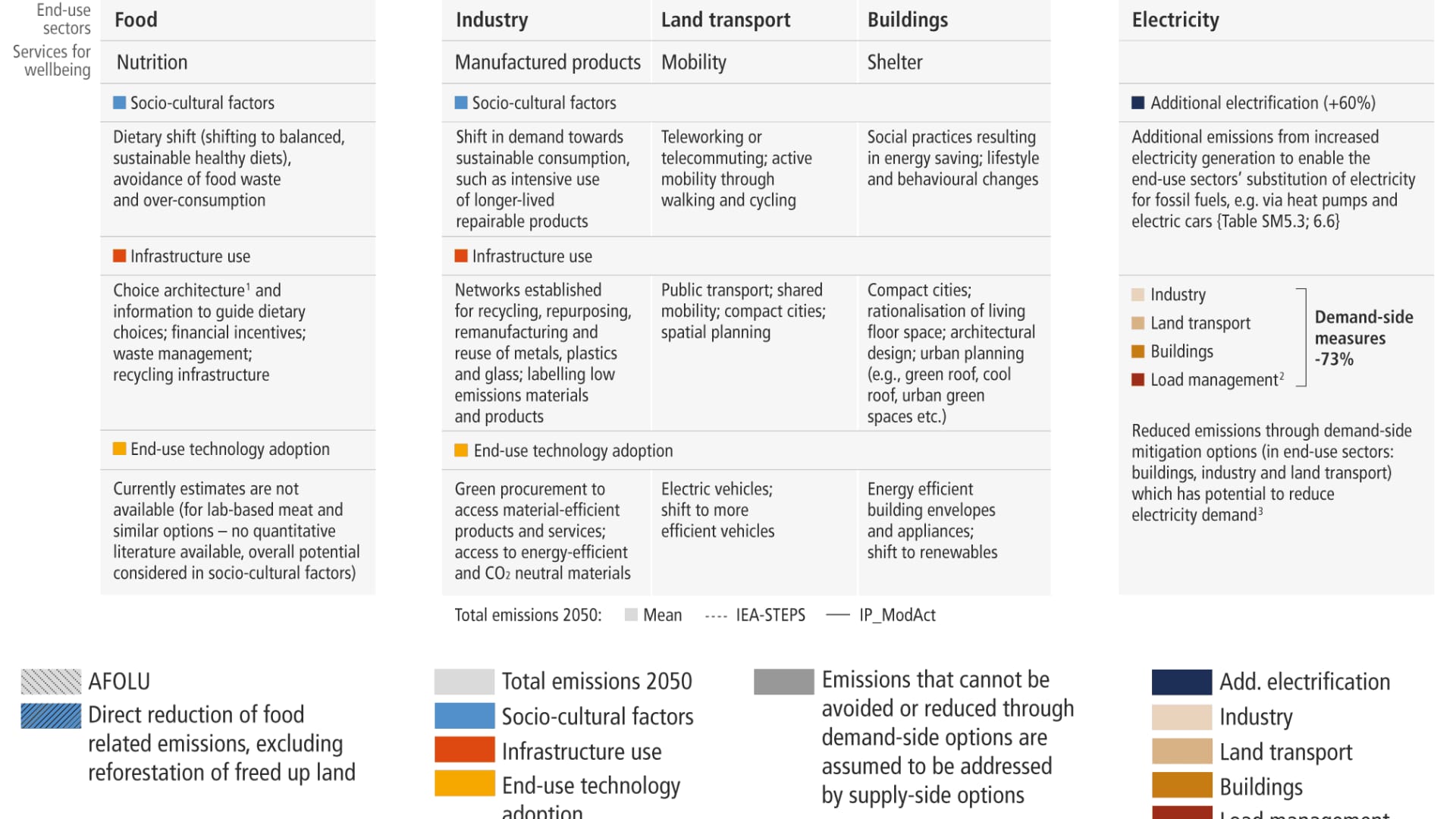
One key component of reducing emissions is limiting demand, which the IPCC has divided into three types of change. "Socio-cultural factors" are behavioral choices individuals make. "Infrastructure use" refers to changes in the design of infrastructure that make it possible for individuals to make different choices. And "end-use technology adoption" refers to changes in the uptake of technologies by end users.
"Having the right policies, infrastructure and technology in place to enable changes to our lifestyles and behavior can result in a 40-70% reduction in greenhouse gas emissions by 2050. This offers significant untapped potential," said IPCC Working Group III Co-Chair Priyadarshi Shukla, in a written statement. "The evidence also shows that these lifestyle changes can improve our health and wellbeing."
Cities where people can walk from one location to another or travel only small distances give people an option to have a lighter carbon footprint.
Also, buildings will need to become more efficient. "We see examples of zero energy or zero-carbon buildings in almost all climates," said Skea. "Action in this decade is critical to capture the mitigation potential of buildings."


